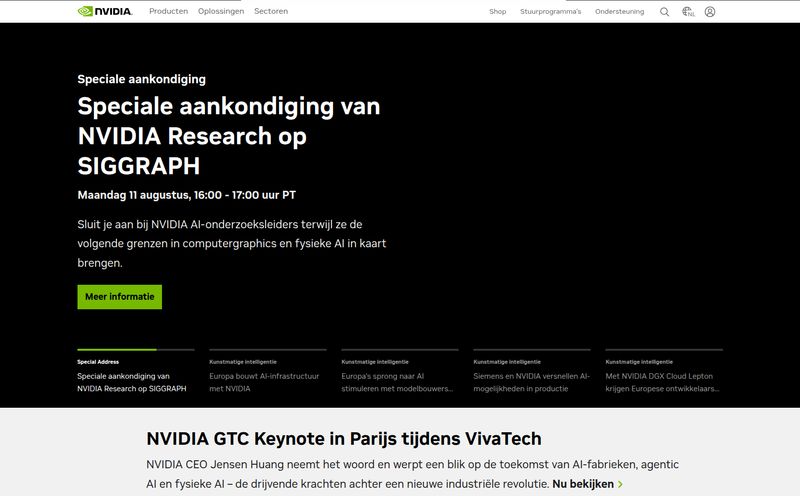If I got a dollar for every time a new "game-changing" AI tool landed in my inbox this year, I'd probably have enough to buy a small island. The hype is real, and frankly, it's getting a little exhausting. Most of them promise to revolutionize your workflow but end up being little more than a slick UI wrapped around a generic API call.
So, when I stumbled upon a landing page with a cute little fox and the words "Testfox is coming soon!", my internal cynic immediately kicked in. Another one? But then I started digging into what they're actually promising, and I have to admit... I'm intrigued. Maybe even a little bit excited. It’s not just another AI writer; it’s aiming straight for the heart of a process that’s notoriously time-consuming and complex: software quality assurance.
For my fellow QA professionals, developers, and agile project managers, you know the drill. Juggling test cases, writing automation scripts, ensuring coverage, and trying to get everyone from marketing to the back-end devs on the same page. It can be a mess. Testfox claims it wants to be the calm in that storm.

Visit Testfox
So, What's the Big Idea Behind Testfox?
From what I can gather, Testfox isn't just trying to automate one piece of the puzzle. It’s positioning itself as a unified AI-powered test management platform. Think of it less as a single tool and more as a central hub for your entire quality process. The goal is to bring product, business, and development teams into one cohesive workspace. A noble goal, and one many have tried to achieve.
The core promise is to boost the ROI of your testing. How? By increasing test coverage (the holy grail), speeding up release cycles, and ultimately, shipping better software without making your QA team want to tear their hair out. It’s a big promise, but the feature set they're teasing has some genuinely interesting ideas.
The AI-Powered Features That Actually Seem Useful
This is where things get interesting. It’s not just about “using AI,” it’s about how they're using it. Here are the features that stood out to me from their pre-launch info.
Seamless BDD Scenario Generation in JIRA
This one's big. For teams committed to Behavior-Driven Development (BDD), the process of writing Gherkin scenarios (you know, the whole Given-When-Then thing) can be tedious. Testfox claims its AI can assist in generating these scenarios directly within a JIRA user story. If this works as advertised, it could be a massive time-saver. It keeps the context right where the work is happening—in JIRA—instead of forcing you to jump between three different apps. It’s about making BDD a natural part of the workflow, not an extra chore.
Meet Your New AI Testing Team
This is probably the most unique feature I've seen. Testfox isn't just one AI; it's a team of AI tester personas. Imagine having a digital specialist for every critical area of testing. The info I found mentions several personas:
- Functional Tester: Your bread-and-butter AI that checks if features work as expected.
- Security Tester: An AI specifically looking for common vulnerabilities. This could be huge for catching things early.
- Usability Tester: Checks for confusing user flows or clunky interface elements.
- Compatibility Tester: Looks at how the app performs across different browsers or devices.
- Exploratory Tester: This one is fascinating. An AI designed to “think outside the box” and find edge cases you might not have considered.
This approach moves beyond simple test generation into comprehensive coverage simulation. It’s like having a panel of experts review every story, which is a luxury most teams simply can't afford.
From Gherkin to Actual Code
Here’s the part that will make automation engineers both excited and nervous. Testfox says it can take those BDD scenarios and generate automation scripts for popular frameworks like Playwright and Cypress. The potential to accelerate test code development is enormous. I mean, who wouldn't want to cut down on writing boilerplate script code?
Of course, the million-dollar question is, what will the code quality be like? We’ve all seen auto-generated code that's a nightmare to maintain. The proof will be in the pudding here, but the ambition is admirable. If it can produce clean, readable, and maintainable scripts, it's a home run.
A BDD-First Philosophy Isn't Just a Buzzword
I like that they are hammering the “BDD-First” angle. For years, folks like Martin Fowler have talked about how BDD is fundamentally a communication technique. It’s about creating a shared language between business stakeholders and the tech team. When your tests are written in plain English that a product manager can understand and sign off on, you eliminate so much confusion down the line.
"The real goal of BDD isn't just to test; it's to build a shared understanding of what the software should do before a single line of code is written."
By integrating a powerful Gherkin editor and AI assistance, Testfox seems to be doubling down on this philosophy. They're not just providing a tool to write tests; they're providing a framework to improve collaboration. And in my experience, most project failures stem from poor communication, not poor code.
The Elephant in the Room: Pricing
Since the platform is still in its "coming soon" phase, there's no pricing page. Nada. Zilch. This is the biggest unknown and will be a massive factor in its adoption. Will it be a per-user-per-month model? A usage-based model? Will there be a free tier for small teams or open-source projects?
My guess is we'll see a tiered structure, probably with different levels of AI usage or features. For a tool this ambitious, I don't expect it to be cheap, but it needs to be competitive. The value proposition has to be crystal clear: does the time and effort saved justify the cost? We'll have to wait and see.
My Cautiously Optimistic Take
So, am I sold? Not yet. But I'm definitely watching the space. Every powerful tool comes with potential pitfalls.
My main concern is the classic "black box" problem. How much control will we have over the AI's output? Can we tweak its logic? What happens when it generates a test that doesn't quite make sense? Relying too much on AI without understanding its process can be risky.
However, the potential upsides are undeniable. Catching bugs earlier in the cycle, reducing the monotonous grind of writing test cases, and freeing up brilliant QA engineers to focus on complex, high-level testing strategies—that’s a future I can get behind. It's not about replacing QA professionals; its about augmenting them. Giving them a co-pilot that handles the boring stuff so they can focus on what humans do best: critical thinking and creative problem-solving.
Frequently Asked Questions About Testfox
What exactly is Testfox?
Testfox is an upcoming AI-powered test management platform designed for agile and QA teams. It aims to be a unified workspace for managing software quality, from generating BDD scenarios to assisting with automation script creation.
How does Testfox use AI in testing?
It uses AI in several ways: generating BDD test scenarios in Gherkin from user stories, using multiple AI personas (like security, usability, etc.) to ensure broad test coverage, and generating starter automation scripts for frameworks like Playwright and Cypress.
Is Testfox meant to replace QA engineers?
No, not at all. The goal of tools like Testfox is to augment human testers, not replace them. It automates repetitive and time-consuming tasks, allowing QA professionals to focus on more complex test strategy, exploratory testing, and critical analysis that requires a human touch.
What automation frameworks will Testfox support?
Based on the initial information, Testfox will provide AI-assisted script generation for two of the most popular modern frameworks: Playwright and Cypress.
Is Testfox available to use right now?
As of this writing, no. The official website has a "coming soon" message. You can likely sign up for a waitlist to be notified of their launch.
What is BDD?
BDD stands for Behavior-Driven Development. It's a software development process that encourages collaboration between developers, QA, and non-technical business participants. It uses natural language descriptions of software behavior (using a format like Gherkin) to guide development and testing.
Final Thoughts
In a sea of AI me-too products, Testfox stands out because it's targeting a genuinely difficult and underserved part of the software development lifecycle. It’s ambitious, and it might not get everything right on day one. But if even half of its promised features deliver, it could seriously streamline the way agile teams approach quality. I’ve signed up for their updates, and you can bet I’ll be writing a follow-up once I get my hands on it. For now, color me cautiously optimistic.
Reference and Sources
- The official website for the tool discussed: While the platform is not yet live, you can monitor its progress at what appears to be its future home (based on the provided information).
- Martin Fowler's Introduction to BDD: https://martinfowler.com/bliki/BehaviorDrivenDevelopment.html
- Playwright Official Website: https://playwright.dev/
- Cypress Official Website: https://www.cypress.io/



